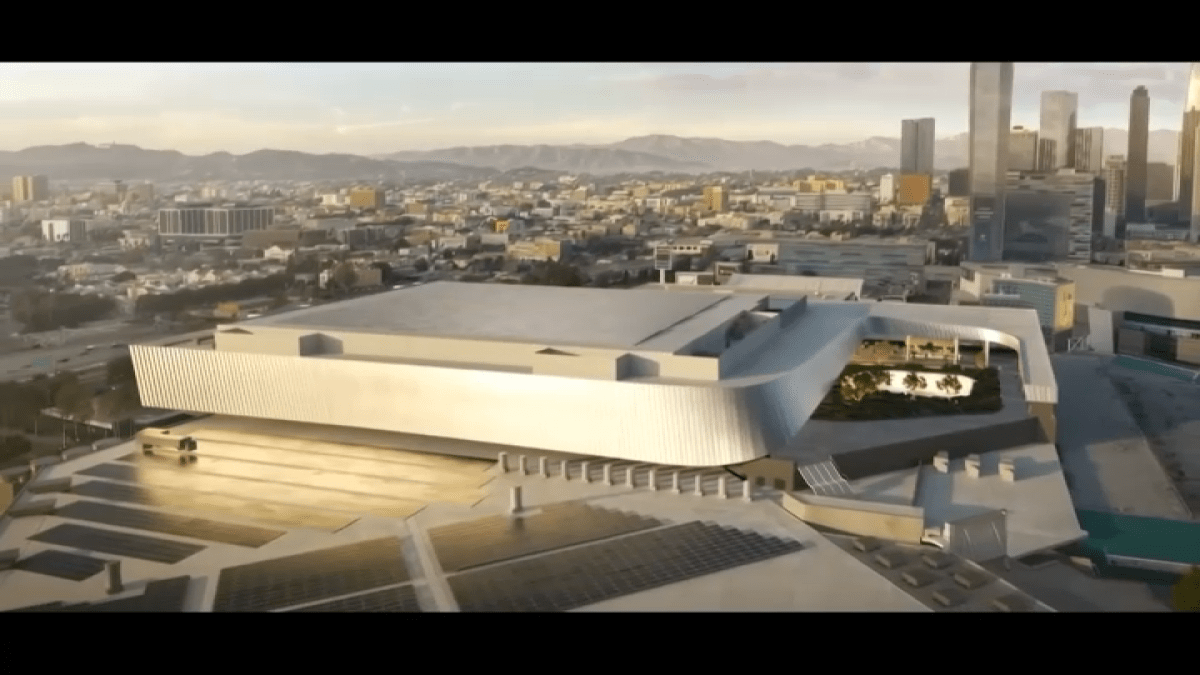The plan to expand the Convention Center in downtown Los Angeles received final approval from LA Mayor Karen Bass as she announced new efforts to revitalize the area.
The $2.62 billion expansion will connect the site’s West Hall with the South Hall, adding 190,000 square feet of exhibit hall space, and nearly 40,000 square feet of meeting room space, and 95,000 square feet for a multi-service room.
The city council, which approved the project in an 11-2 vote last week despite potential risks to the city’s finances with the hefty price tag, also authorized issuing $990 million in bonds to fund the project, with the debt service paid through 2058.
The expansion, city officials said, will bring more jobs to the region and help the city prepare for large international events in the coming years, including the 2028 LA Olympics and Paralympics.
The city’s projection says the project will create some 9,000 union jobs and 1,600 apprenticeships while generating $1.8 billion in additional local business sales and $103 million in tax revenue for city services.
The construction was scheduled to begin in October and must be “Olympic ready” by March 31, 2028 as the venue is slated to host fencing, taekwondo, judo, wrestling and table tennis for the 2028 Olympics and wheelchair fencing, taekwondo, judo, boccia and table tennis for the 2028 Paralympics. If the project is not complete by the spring of 2028, the city will have to pay for additional costs as the competitions will likely need to be relocated.
Mayor Bass said during a news conference Wednesday that the expansion project is an investment to the city and the local economy.
“It is our responsibility to do this in a way that first and foremost protects our fiscal level, and we’ll work in partnership with the City Council to implement cost-saving measures, efficiency, improvements and streamline our projects, which is most important to ensure our timing while we do everything to fast track this project in a responsible way,” Bass said.
The city will finance $3.06 billion for the project, after adding the capitalized interest and bond issuance cost, according to City Administrative Officer Matt Szabo. Approximately $566 million will be set aside for “city-retained costs” to control overages, cover the impact of tariffs on construction materials, electrical service delivery and other potential risks.
The project will have an average annual general fund impact of about $89 million. In the early years the debt service will be higher.
City Controller Kenneth Meija is one of the critics against the project.
City Controller Kenneth Mejia is also against the project, saying the city must prioritize its services to Angelenos first.
“As long as the city fails to fundamentally change the way it handles its finances and continues to inadequately fund city services for our nearly four million residents, we cannot recommend taking on this project at this time,” he said.
Council President Marqueece Harris-Dawson has called the project “perhaps one of the biggest decisions that the city made.”
“It is a decision that, if it goes in one direction, has at least 30- year implications on the budget and beyond. Either way, this decision has an impact on our city for generations to come,” Harris-Dawson said previously.
Meanwhile, as the construction begins in a few weeks, Mayor Bass said there will be additional foot patrols by the LAPD while mental health teams will be deployed to downtown LA communities. The city will also fast-track permits for downtown LA developments as it continues with beautification projects, including graffiti removal, according to Bass.
